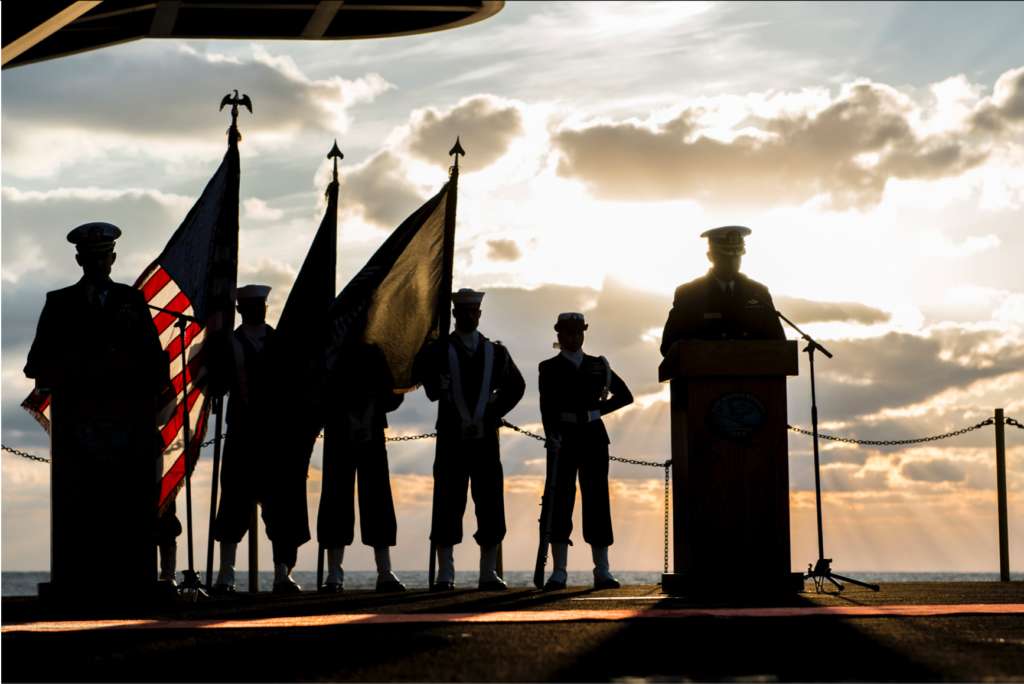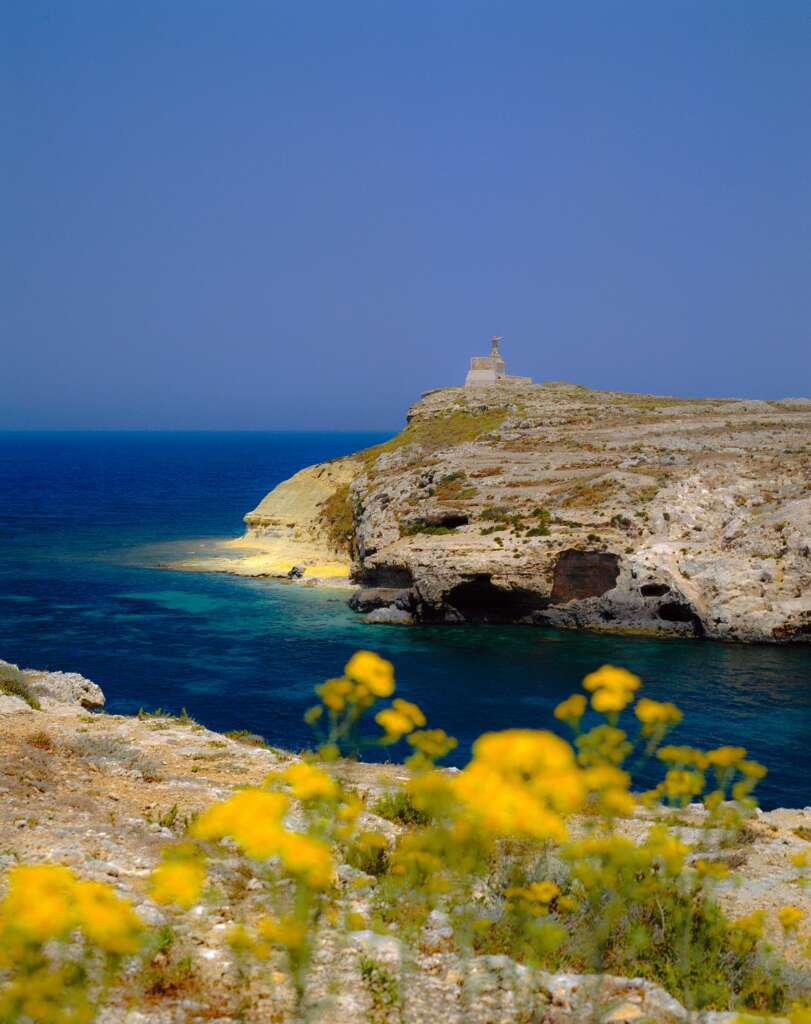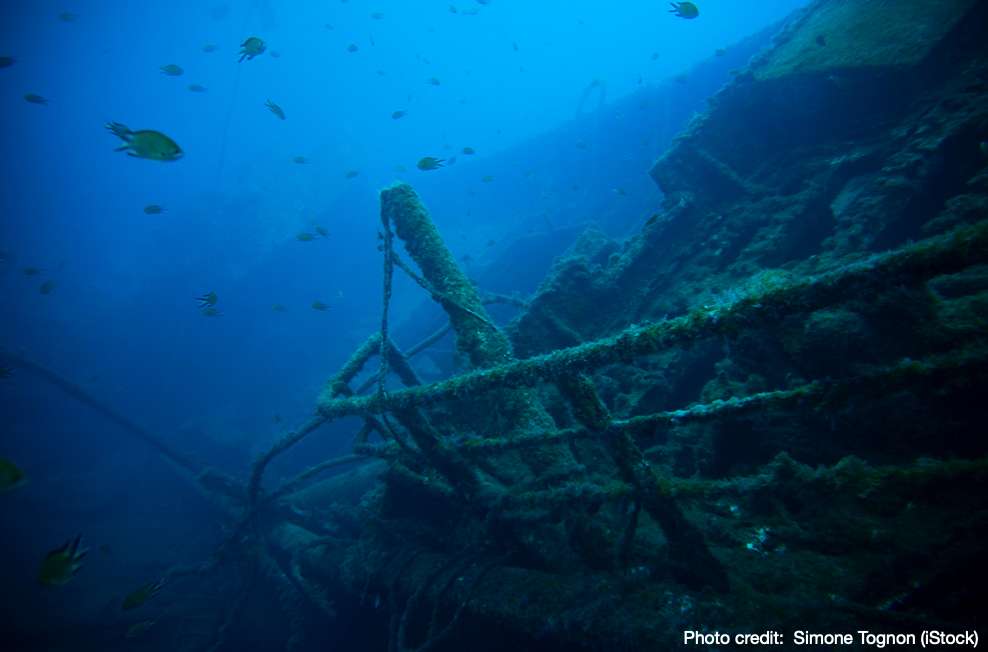The late Irish poet Dylan Thomas once crafted a poem called “And Death Shall Have No Dominion” based on Paul’s Epistle to the Romans. I’m not sure how many Christians are fond of Dylan Thomas, though they may have been exposed to him in college. Part of the poem reads:
Though they go mad they shall be sane,
Though they sink through the sea they shall rise again;
Though lovers be lost love shall not;
And death shall have no dominion.
“And Death Shall Have No Dominion” Dylan Thomas (1933)
These few lines of Thomas’ poem cover many different themes: madness, love, people lost at sea, and death. I’d like to focus on those who died (or were buried) at sea and briefly, death, itself. Incidentially, burial at sea is not an antiquated practice in the U.S. Navy. Active duty sailors and retired military are still buried at sea under specific circumstances and criteria.

Even though Thomas apparently had the Apostle Paul’s “Epistle to the Romans” in mind, at least one line is taken from Revelation 20:12-13 where John writes (redacted):
“And I saw the dead, great and small, standing before the throne, and books were opened. . . .
The sea gave up the dead that were in it, and death and Hades gave up the dead that were in them, and each person was judged according to what they had done.”
Names of victims long forgotten
Think of the hundreds of thousands, nay, millions of men, women and children over the ages whose mortal remains litter the ocean floors. These said remains have long since become indistinguishable from the sand and other debris of the ocean floor. Or, in the words of Thomas:
“When their bones are picked clean
and the clean bones gone. . .”
– Dylan Thomas
The exact process and rate of decay of human remains on the sea floor depends on several variables, chiefly the water temperature and depth. But decay is inevitable. Yet, some artifacts mark the numerous watery graves. Whether from sailing in Phonecian gauloi, Spanish galleons, New Bedford whaling barks, WWII Liberty Ships, or modern nuclear submarines, the sea floor preserves some inorganic, barely recognizable remains. This could be an aircraft propeller, anchor chain, pieces of eight, shards of broken wine jars, waist coat buttons or buckles. There was no shortage of shipwrecks.

Even the Apostle Paul was involved in a shipwreck, though he survived and made it to land without perishing (See illustration below.) The English poet Samuel Johnson (1709-1784) had no great fondness for sailing and once said “being in a ship is being in a jail, with the chance of being drowned.” While safety standard have improved and not as many seafarers perish today as in the past, still the toll rises.

When one thinks of drowning on a sinking ship, images of the Titanic or Lusitania likely come to mind. But many other sailors gave their lives during wartime. Occasionally, ships filled with refugees (e.g. the MV Wilhelm Gustloff) were torpedoed as well (over 9,000 souls lost their lives from that incident alone.)
Some occupations such as whaling were particularly hazardous. Herman Melville aside, chasing sperm whales or humpback whales in a small boat was a deadly game played between man and one of the more intelligent mammals on the planet.
But we are assured in Scripture that in the end, every person who died on the Titanic, serving onboard with the Spanish Armada, who were abandoned on the Andrea Doria, the 3,000 crew and passengers on the Luisitania, the 9,000 refugees on the Wilhelm Gustloff, and those of countless others ships with names long forgotten will be someday resurrected.
We read about the valley of dry bones coming to life in Ezekiel, but are bones actualy necessary for a resurrection? People in the Middle Ages thought so. The popular pirate flag (skull and crossbones) which we consider an omen of impending death was actually a symbol of life in the Middle Ages because the common believe back then was that all that was needed for God to raise a person was that person’s skull and two femurs. But God is God and therefore not contrained to such provincal beliefs.
Death
Scripture teaches us that death is our enemy. But it also reveals to us that there is another reality that we encounter after we cross that River. Death, never part of God’s original plan, was introduced after Adam and Eve sinned. Jesus says in John 6:40 “This is indeed the will of my Father, that all who see the Son and believe in him may have eternal life; and I will raise them up on the last day.” Regardless of where they are; On the summit of Everest or the depths of the Mariana Trench. Whether on this planet Earth, or our sister planet Mars, the just (believers in Christ) will be resurrected. Paul says in Romans 6:9: “For we know that since Christ was raised from the dead, he cannot die again; death no longer has mastery over him.” And this is what Dylan Thomas refers to when he writes “And death shall have no dominion over him.”
There will also be a resurrection of the unjust, those fated and sealed as the Lost. But either way as far as the departed seamen are concerned:
“No more may gulls cry at their ears
Or waves break loud on the seashores;
Where blew a flower may a flower no more
Lift its head to the blows of the rain. . .”
– Dylan Thomas



